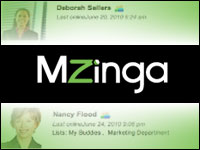
I hate to sound like Dr. Doom and Gloom, but have you paid attention to the cost of gasoline lately? Of course you have. It’s sickening to watch as prices resume their inexorable climb. The last time we saw prices spike was the last time the economy was in decent shape — right before the wheels fell off in 2008.
The global economy is based on the assumption that transportation and raw materials are cheap and will remain so. Petroleum is our dominant fuel source, and it doubles as a raw material for plastics, rubber, fertilizer, cement and many other materials that make the world run.
The price rise is no surprise. As the global economy began to feel better, we all began to use more petroleum and electricity. The authoritative IEA (International Energy Agency, based in Paris) pegs global demand at 90 million barrels per day (mbd), while supply has never gotten above 88 mbd. The small difference, for all of you supply and demand types, drives the higher cost of driving.
While you might see this as a catastrophe, I smell an opportunity. This is a disruptive moment, and whenever a situation like this arrives, it usually means there’s an imbalance opening a niche for a new solution. Frequently, though not always, that means a technological solution.
Opening the Door
Historically, CRM fit that description. On-demand computing, embedded analytics, social media and an array of sales, marketing and service applications followed CRM’s debut. The universe is still resonating from that big bang, and we are now at the start or the middle of another. High transportation costs open the door to a variety of solutions that help organizations to reduce their traveling while maintaining their business agility.
Consider unified communications systems (UCS), which bring together voice, mobile, calendars, chat and video conferencing. UCS has two jobs in a high-cost transportation environment. First, leveraging UCS can mean less travel for anyone who currently commutes to an office to work on a computer. Much of that work could be done remotely if we have good communication between the hub and spoke. That works for people in call centers — which have leveraged Internet technologies for a long time to do this — as well as for sales and other business people, and for creative types.
For customers, a video chat or conference might speed solutions and reduce the need for all parties to converge in a conference room, saving everyone travel costs, but also time, which is even more valuable.
Less Running Around
At a macro level, the days of the 10,000 or 20,000 attendee (or more) conference might be ending. Vendors and their customers spend huge sums annually to attend user groups and similar meetings. Visionary vendors are already taking advantage of Internet conferencing technologies to get the job done with much less travel and cost.
The savings might go back into the corporate pocket, but some of those dollars could also be recirculated to support more frequent Web conferences. Think about it — we have cloud computing with multiple releases per year, yet the user conference is so expensive to put on that we only see one per year. That could change with online conferences, and that would speed up the cadence of change in many companies.
Personally, I would miss visiting some of the cities I visit each year, and many attendees might miss the travel perks. But that might simply be the symptom of another opportunity to fulfill.
The important point to keep in mind is that no change of this type is total, and complete change is not even what’s required. If we start a process that enables us to get energy supply and demand back in synch, then we will see reductions in other costs. This can also mean that the economy whipsaws for a while with prices and economic activity moving in opposite directions. To avoid this, we will need to pick new directions and stay with them.
There are other good reasons to consider these and other additions to the CRM suite. In a global economy, customers are everywhere, and many potential new customers are too far away to seriously contemplate face-to-face interactions. The traditional answer has been to open offices in other countries, but that’s expensive. More importantly, many of the things we sell online are delivered at price points that will not support that kind of expansion. All of this makes the case for expanding an increasingly sophisticated communications footprint.
The high cost of transportation might be the proximate cause of this expansion, but as this short examination shows, the downstream benefits can be big. If the future works out as I think it will, it makes sense for all of us to consider again how we can best build out the front-office suite.
























































